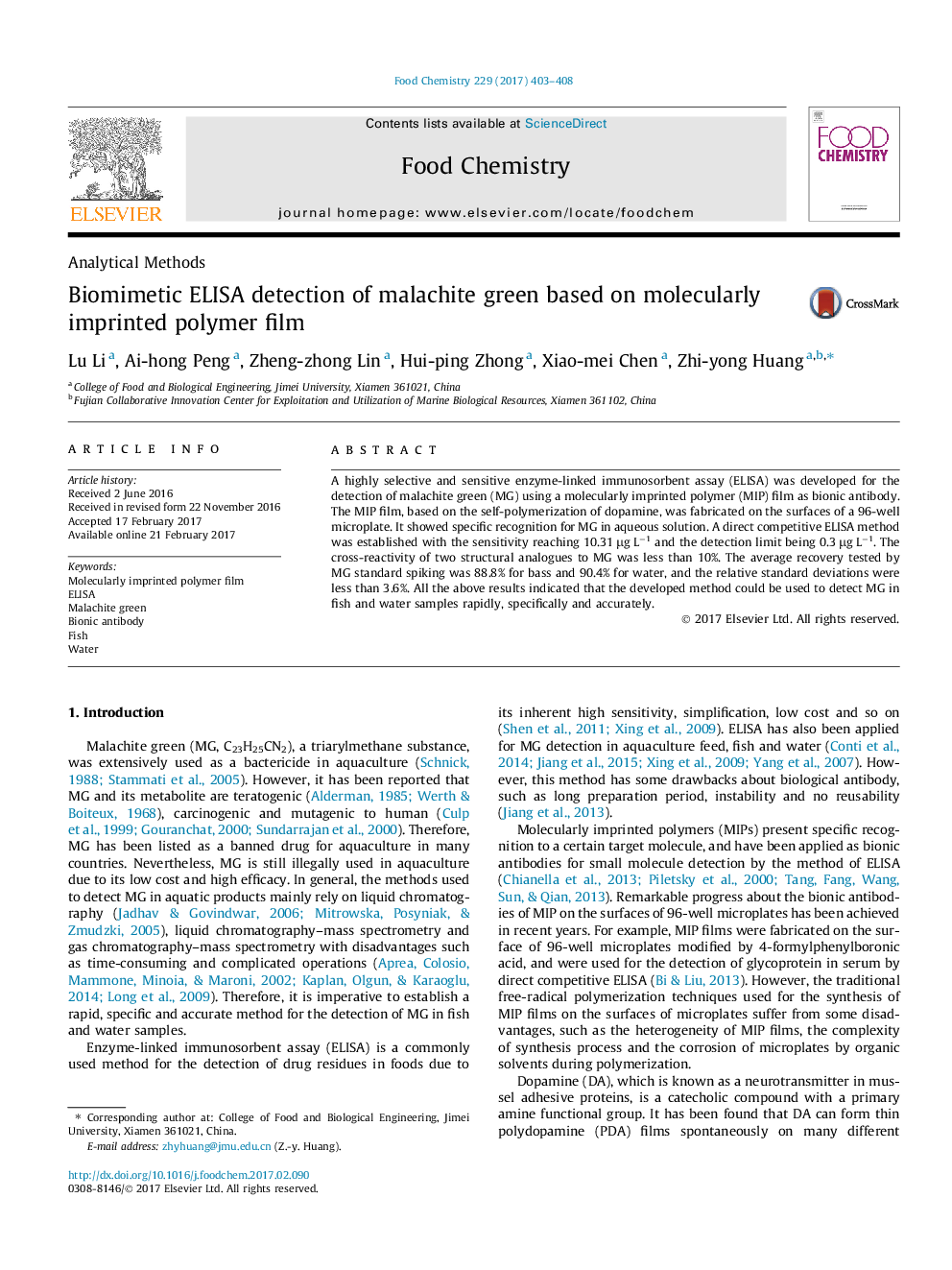| Article ID | Journal | Published Year | Pages | File Type |
|---|---|---|---|---|
| 5133692 | Food Chemistry | 2017 | 6 Pages |
â¢MIP films on the surfaces of 96-well microplates are accurately fabricated by the oxidative polymerization of dopamine.â¢A novel biomimetic ELISA method is developed for the detection of malachite green using MIP films as bionic antibody.â¢The bionic antibody of MIP film presents favorable specificity, sensitivity and repeatability.
A highly selective and sensitive enzyme-linked immunosorbent assay (ELISA) was developed for the detection of malachite green (MG) using a molecularly imprinted polymer (MIP) film as bionic antibody. The MIP film, based on the self-polymerization of dopamine, was fabricated on the surfaces of a 96-well microplate. It showed specific recognition for MG in aqueous solution. A direct competitive ELISA method was established with the sensitivity reaching 10.31 μg Lâ1 and the detection limit being 0.3 μg Lâ1. The cross-reactivity of two structural analogues to MG was less than 10%. The average recovery tested by MG standard spiking was 88.8% for bass and 90.4% for water, and the relative standard deviations were less than 3.6%. All the above results indicated that the developed method could be used to detect MG in fish and water samples rapidly, specifically and accurately.
